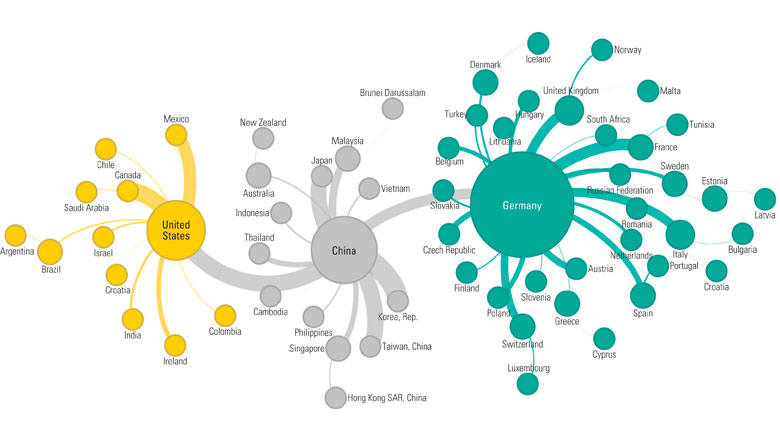WASHINGTON, June 13, 2016—Globalization has changed the way firms participate in production networks. Previously, companies primarily made products in one country and countries had to make complete goods from start to finish in order to compete internationally.
But now, low- and middle-income countries can integrate with global value chains (GVCs) by specializing in certain tasks along the chain of international production. Firms make components in the most cost-effective location and value is added at every step along the way, resulting in a finished product that is assembled with inputs from multiple countries.
For developing countries, this means they can become competitive sooner and more easily access benefits from industry such as faster growth and more and better jobs for workers. But the potential benefits of GVCs are not automatic. Countries must have not only effective trade and investment policies in place but also the appropriate domestic business environment, as well as a strategic vision for how they will engage with a GVC.
GVCs, their benefits for developing countries and the tools needed to make them most effective are the topic of a new book from the World Bank Group’s Trade & Competitiveness Global Practice: Making Value Chains Work for Development.
“Southeast Asia is an example of a region that has integrated with several GVCs. Following the investments of many major multinational corporations attracted by the low costs of production, it has become known as a trusted hub for producing not only electronics parts and automobile components, but increasingly knowledge-intensive goods and services,” notes Daria Taglioni, World Bank Group Lead Trade Economist and book co-author.
“At the opposite end of the spectrum, according to Taglioni, “African countries have not captured the same level of investment. Even though several regional economic agreements have made trade between African nations easier, most countries do not yet have the infrastructure or policies in place to actively and efficiently participate in GVCs.”


